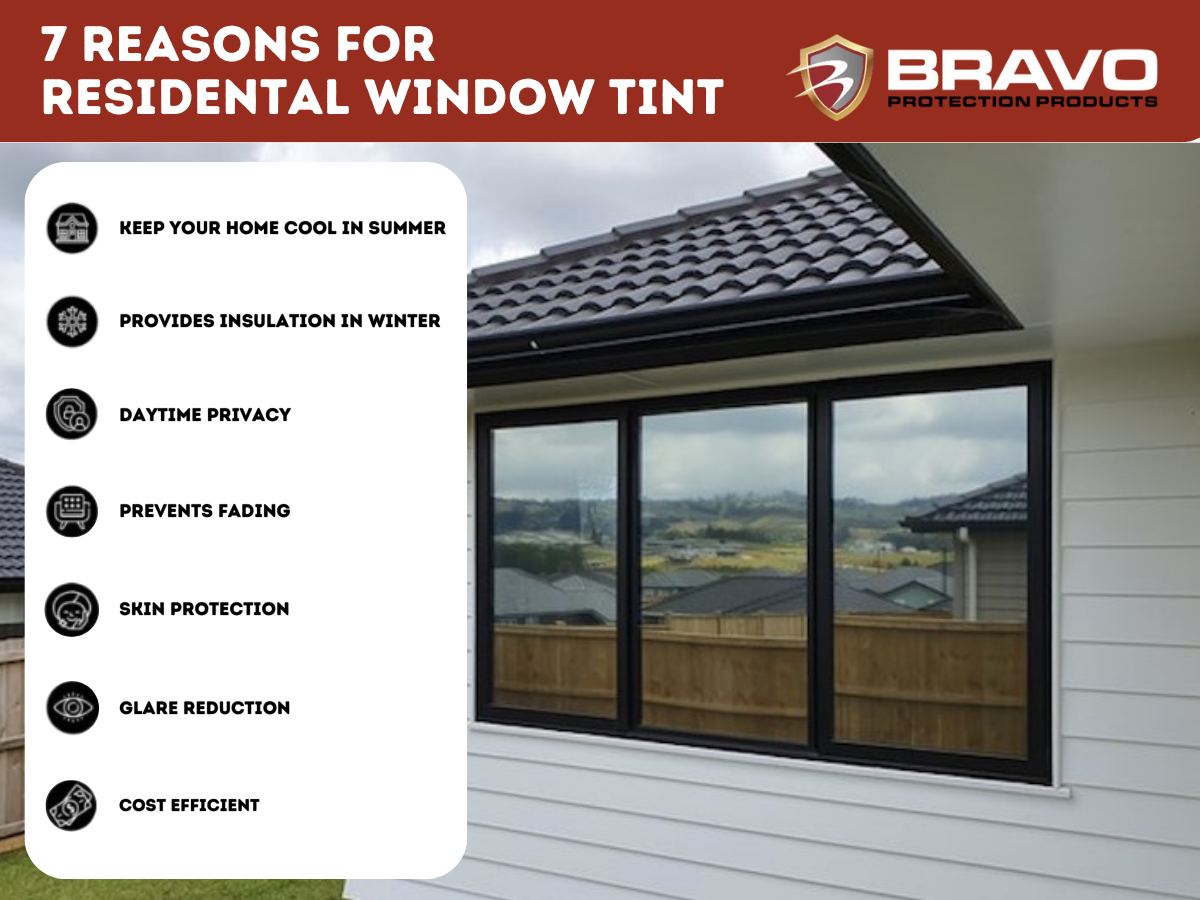Just How Residential Window Tint Enhances Your Home's Aesthetic Appeal
How Residential Home Window Tinting Enhances Your Home's Power Effectiveness
Residential home window tinting provides an engaging service for home owners seeking to improve energy effectiveness within their living rooms. By using specialized movies to home windows, it effectively decreases warm transfer, consequently maintaining interior temperature levels and minimizing the requirement for extreme heating or cooling.
Comprehending Window Tinting
Comprehending home window tinting is crucial for home owners looking for to boost both convenience and power performance in their space. Residential Window Tint. Home window tinting entails the application of a slim movie to the inside or outside surface area of glass home windows. This movie can considerably modulate the quantity of sunlight and heat that enters a home, thus affecting interior environment conditions
There are different types of window tinting movies readily available, each with unique homes. The effectiveness of home window tinting is typically measured by its Visible Light Transmission (VLT) percent, which indicates just how much light can pass with the movie.
Benefits of Power Effectiveness
Window tinting not just enhances visual appeals yet likewise plays a significant function in improving energy performance within household spaces. By reducing warm transfer through home windows, colored films produce an extra steady interior environment, which can result in substantial reductions in energy intake for cooling and heating. This energy effectiveness converts into lower energy bills, giving property owners with significant long-term cost savings.

Additionally, home window tinting improves the comfort of living rooms. By lessening glow and blocking harmful UV rays, colored windows develop an even more pleasurable environment, which can lead to boosted wellness for residents. The defense against UV rays also aids preserve furniture and floor covering from fading, adding to the long life of family items.
Exactly How Tinting Works
Tinting movies operate with a combination of sophisticated materials and modern technologies developed to control the amount of solar energy going into a home. Primarily composed of polyester, these movies typically incorporate metal or ceramic fragments that take in and reflect warm. This dual capability enables them to substantially decrease the infiltration of ultraviolet (UV) rays and infrared radiation while permitting noticeable light to go through.
The performance of window tinting is determined by its solar warm gain coefficient (SHGC), which indicates just how much solar power is transmitted via the home window. Lower SHGC values are better as they denote better heat being rejected. Additionally, window colors can include a variety of tones, allowing house owners to tailor their visual choices while enhancing energy effectiveness.
Furthermore, these films function as an obstacle, preventing heat loss during chillier months by mirroring indoor warmth back into the home. This thermal insulation impact enhances the air conditioning benefits acquired during warmer months, adding to a well balanced interior environment year-round. By managing solar power properly, domestic home window tinting not only boosts convenience yet additionally plays an essential duty in lowering power intake and decreasing energy expenses.
Selecting the Right Tint

There are numerous kinds of home window films available, including dyed, metalized, and ceramic. Ceramic films supply excellent heat control without jeopardizing exposure and are extremely sturdy, making them a preferred choice.
Visible light transmission (VLT) is one more vital variable, as it indicates the amount of natural light that can travel through the tinted glass. Property owners ought to select a tint with a VLT that complements their lighting preferences while still providing adequate glare decrease.
In addition, evaluating the solar heat gain coefficient (SHGC) can aid identify how well a tint can obstruct warmth from sunshine. A lower SHGC suggests better heat control, visit the site ultimately boosting power effectiveness.
Installation and Upkeep Tips
Correct setup and maintenance are essential elements in optimizing the benefits of household home window tinting. To achieve optimum outcomes, it is recommended to work with a qualified professional for installment. This guarantees that the color is applied correctly, preventing air bubbles, wrinkles, or imbalance that could endanger performance. Specialists likewise make use of specialized methods and tools, which can improve the resilience and effectiveness of the color.
Following installation, maintenance is crucial to prolong the life of the window film. It is suggested to wait at the very least 30 days prior to cleaning up the tinted windows to enable the sticky to heal totally.
Attending to these problems quickly can prevent further damages and preserve energy efficiency. By sticking to these setup and maintenance tips, home owners can guarantee their window tinting proceeds to supply considerable energy financial savings and convenience for years to come.
Conclusion
Finally, household window tinting functions as a reliable option for improving energy efficiency within homes. By decreasing heat transfer and obstructing unsafe UV rays, home window films add to lower power usage and improved interior comfort. The option of suitable tinting products, together with proper setup and upkeep, additionally makes best use of these advantages. Ultimately, window tinting stands for a sustainable financial investment that not only decreases utility costs but additionally promotes a comfy living setting throughout the year.
Home window tinting entails the application of a thin film to the interior or outside surface area of glass windows. By decreasing warm transfer via home windows, tinted films produce an extra secure you can try this out interior climate, which can lead to considerable decreases in power intake for heating and cooling.The efficiency find more of window tinting is determined by its solar warmth gain coefficient (SHGC), which shows how much solar energy is transferred with the home window. By handling solar power properly, residential window tinting not only enhances comfort but also plays a vital role in decreasing energy consumption and lowering utility bills.
By decreasing warm transfer and blocking damaging UV rays, window films contribute to lower energy consumption and boosted interior convenience.